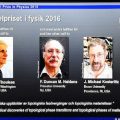PTE考生目前最大的问题之一就是练习题缺乏。除了有限的基本官方书(PLUS,Testbuilder, OG)之外就没有题了。很多英语基础不是很扎实的同学很难找到练习材料。悉尼文波雅思PTE培训学校专门为澳洲,尤其是悉尼、墨尔本的PTE考生准备了适合PTE听力阅读练习的科学60秒。各位PTE同学可以练习PTE听力中的summarise spoken text和PTE口语中的retell lecture,练习记笔记技巧和复述。
听力内容:
60秒科学节目(SSS)是科学美国人网站的一套广播栏目,英文名称:Scientific American – 60 Second Science,节目内容以科学报道为主,节目仅一分钟的时间,主要对当今的科学技术新发展作以简明、通俗的介绍,对于科学的发展如何影响人们的生活环境、健康状况及科学技术,提供了大量简明易懂的阐释。
This is Scientific American — 60-Second Science. I’mChristopher Intagliata.
There’s a stretch of highway in Pennsylvania, alongU.S. 422. “And like every probably 20 feet you see abig pothole or cracking at the joint. Likeeverywhere. It was so bad.” Yaghoob Farnam is aconstruction materials engineer at DrexelUniversity in Philly. And this road is pretty much his worst nightmare. “Yeah and just imagine Iwas driving like 60 miles per hour, I could see, I could feel it, I was driving, I was so mad, like, ‘what is going on with this?‘”
The culprit, he says, may be calcium chloride road salt, used to de–ice highways in the winter. Because calcium chloride reacts with a compound in concrete called calcium hydroxide toform another compound called calcium oxychloride. “It’s a huge molecule that causes a lotof pressure inside concrete. And starts degradation of concrete.”
The solution? Novel blends of concrete that use cheap leftover materials from the coal andsteel industries: fly ash, silica fume and slag. In his latest work, Farnam and his team createdplugs of these experimental concretes, and submerged them in salty solutions—along withplugs of conventional concrete. Then they eavesdropped on any cracking with high–sensitivity acoustic sensors. And they tracked heat flow through the material, to monitorchemical reactions.
The results: concrete slugs made with ingredients like fly ash and slag held up remarkablywell after more than a month. Whereas normal concrete was cracked to pieces in just a week. Their recipes are in the journal Cement and Concrete Composites.
Farnam says some states have actually started using this sort of concrete—because it’salready known to make the material more durable against other factors, like corrosion ofinternal steel reinforcement. As for those cracks on U.S. 422, and elsewhere? Farnam hasanother project in the works—to apply a bacterial slurry, which forms limestone when itinteracts with salt, plugging up the gaps. But he says that work is still a ways…down theroad.
Thanks for listening for Scientific American — 60-Second Science Science. I’m ChristopherIntagliata.
墨尔本悉尼霍巴特文波PTE原创首发
更多精彩请持续关注微信wenbo_tv3。





